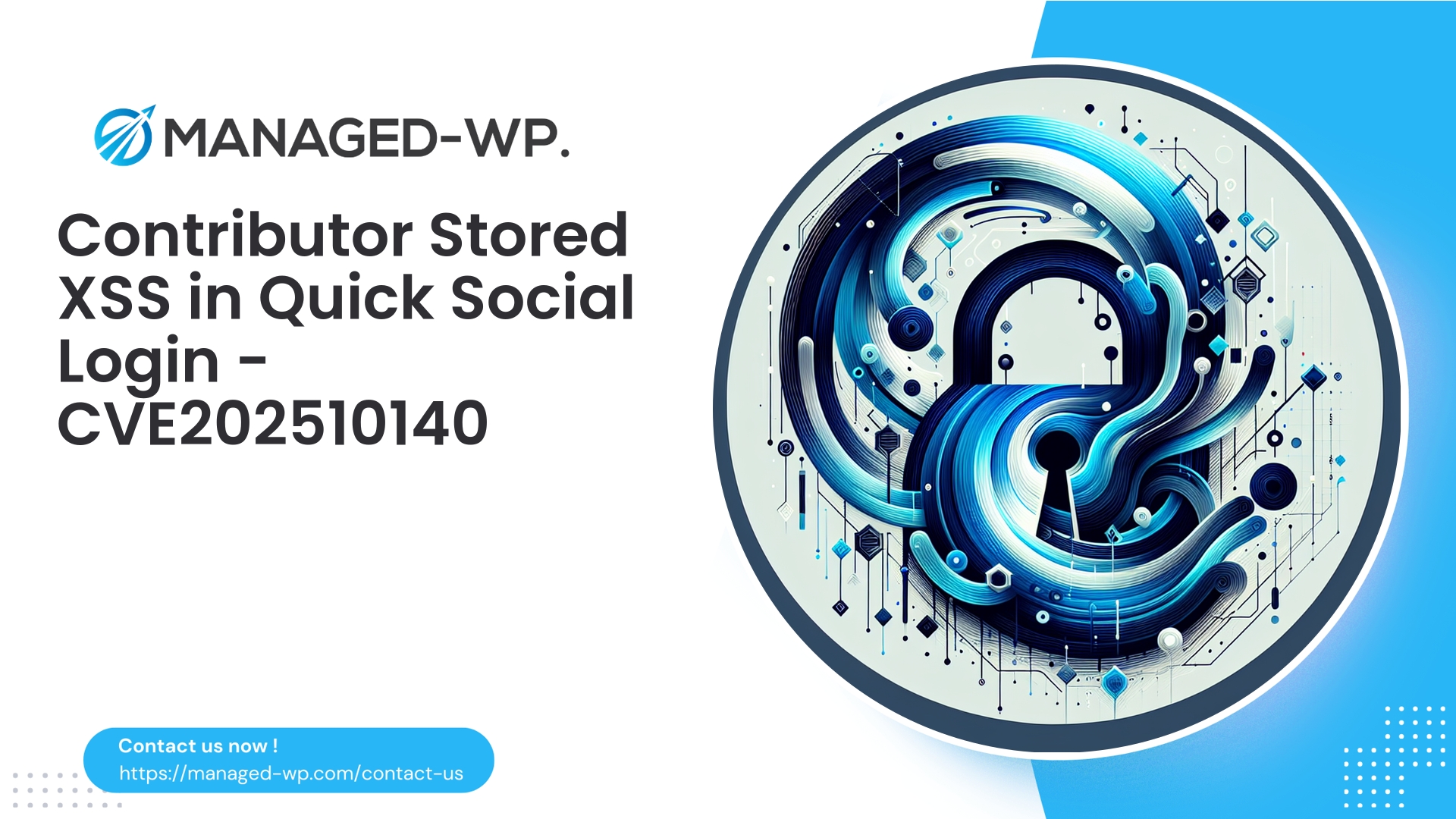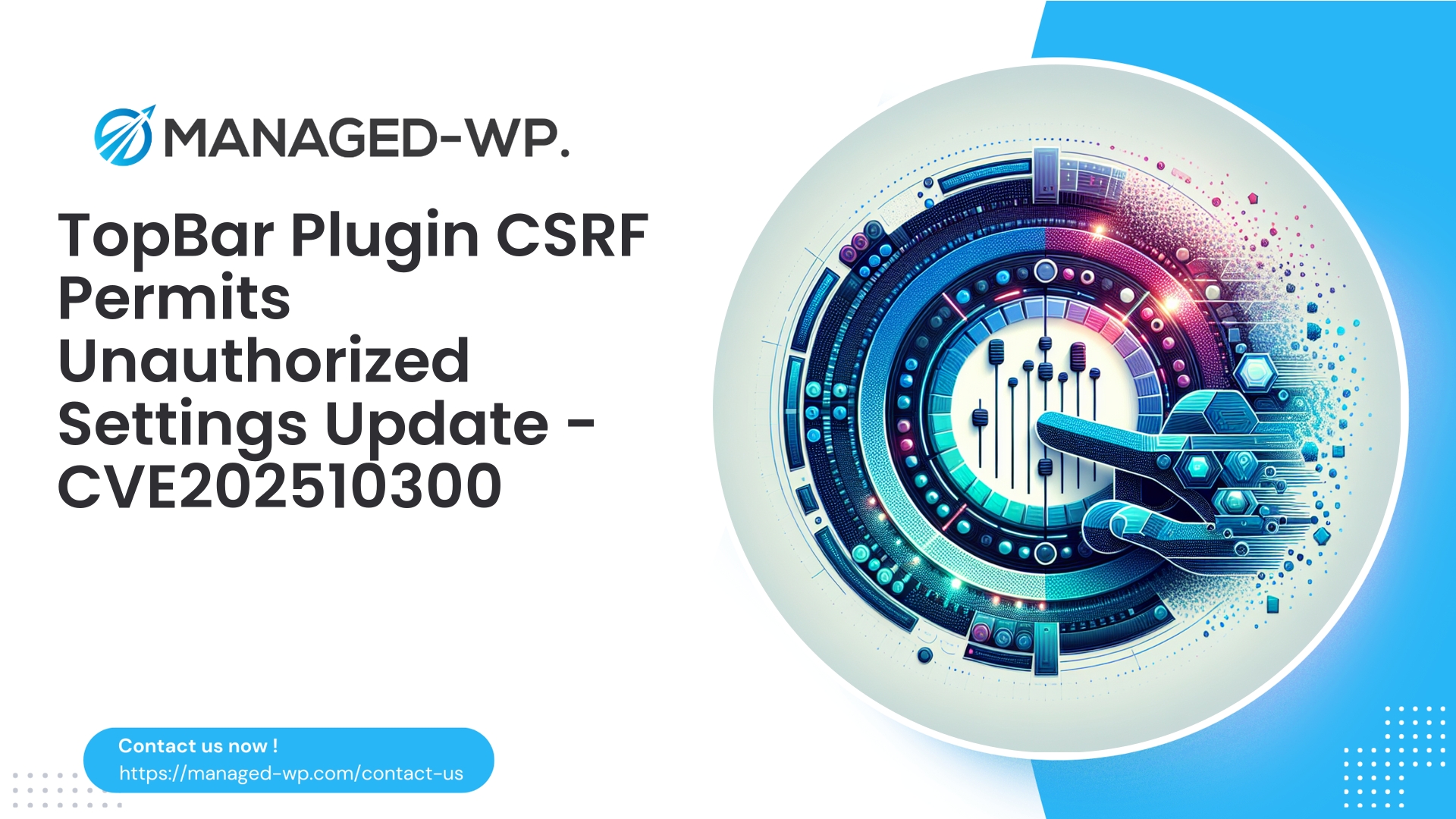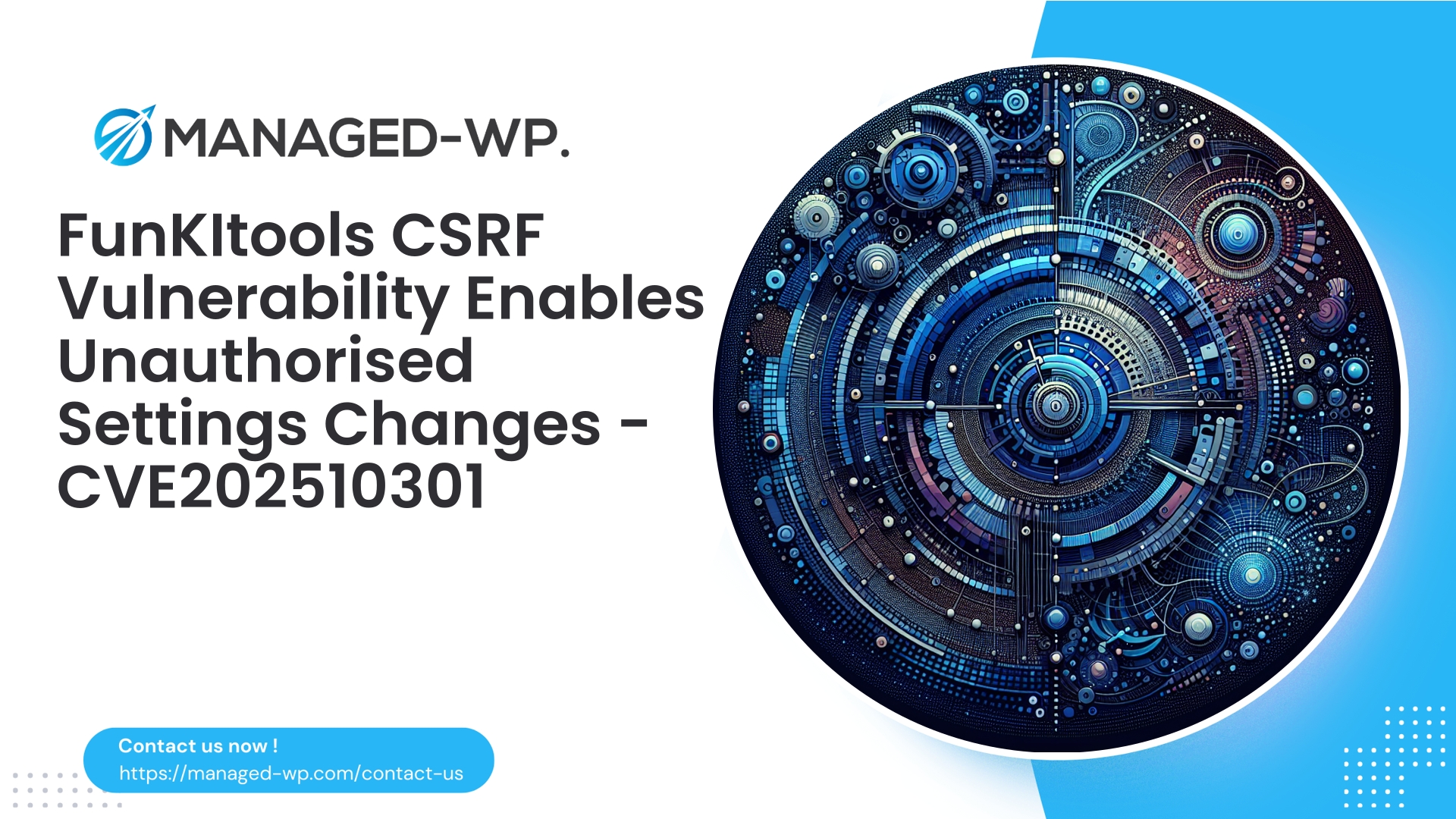| 插件名称 | 快速社交登录 |
|---|---|
| 漏洞类型 | 已认证存储型 XSS |
| CVE编号 | CVE-2025-10140 |
| 紧急 | 低的 |
| CVE 发布日期 | 2025-10-15 |
| 源网址 | CVE-2025-10140 |
紧急通知:Quick Social Login 插件(≤ 1.4.6)——已认证贡献者存储型跨站脚本攻击漏洞 (CVE-2025-10140)——WordPress 网站所有者的重要信息
执行摘要
- 漏洞类型: 存储型跨站脚本攻击(XSS)
- 受影响的插件: Quick Social Login WordPress 插件(版本最高至 1.4.6)
- CVE标识符: CVE-2025-10140
- 所需访问权限级别: 贡献者(已通过贡献者权限认证)
- 补丁状态: 目前尚无官方补丁可用
- 风险评估: 风险等级为低至中等(CVSS 6.5),但对于允许贡献者角色的网站而言仍然很重要。
在 Managed-WP,我们采用积极主动的方式,优先保障 WordPress 环境的安全。虽然 CVSS 评分显示该漏洞的严重程度为中等,但实际威胁很大程度上取决于网站的具体情况,例如用户角色分配以及插件处理用户输入的方式。本文将详细介绍该漏洞、对您网站造成的风险、潜在的利用场景、检测技术以及可立即采取的缓解措施。此外,我们还将探讨如何在官方补丁发布之前,利用功能强大的 Web 应用防火墙 (WAF) 提供关键的保护层。
了解漏洞
此问题涉及存储型跨站脚本攻击 (XSS)。恶意用户通过 Quick Social Login 插件提交的输入会被保存,并在未经适当清理或编码的情况下呈现给网站管理员或访客。这使得攻击者能够在受害者的浏览器环境中执行任意脚本。
贡献者通常无法直接发布内容,但可以通过各种输入框(例如个人资料字段、社交登录设置或短代码内容)提交数据,这些数据会被插件存储。如果这些输入框的数据之后未经清理就出现在管理后台或面向公众的页面上,注入的脚本就可能被执行,从而导致会话劫持、权限提升或恶意重定向等未经授权的操作。
尽管CVSS评分中等,但为何此漏洞仍需引起重视
- 贡献者账户经过身份验证,攻击者可以以极低的门槛获取/注册这些账户。
- 存储型 XSS 通过在管理员浏览器中执行恶意载荷,为提升权限提供了一条途径。
- 该插件的输出表面可能被广泛访问,包括公共个人资料或管理界面,从而增加了攻击面。
- 没有官方补丁意味着网站所有者必须实施纵深防御来维护安全。
潜在的利用场景
- 具有贡献者权限的攻击者将恶意脚本注入到管理页面上呈现的插件相关数据字段中,从而在查看时危及管理员会话。
- 注入的脚本通过公开可见的用户个人资料或短代码进行传播,可能会将访问者重定向到恶意网站或窃取会话详细信息。
- 存储型 XSS 被用作跳板,以编程方式创建管理员帐户、注入恶意软件或窃取敏感信息。
检测泄露迹象
主动检测至关重要。请考虑以下方法:
- 审核用户最近提交的内容,查找可疑的 HTML 或脚本标签。
- 查询数据库中包含以下内容的条目
<script>,javascript:或事件处理程序(例如,错误=,onload=). - 监控插件设置和任何显示用户输入的管理页面,以发现异常行为或脚本执行情况。
- 查看网站服务器和 WordPress 日志,是否存在异常的管理员操作或 AJAX 调用。
- 对插件和主题文件进行彻底的恶意软件扫描。
- 核实并审核用户帐户,特别是新创建的管理员帐户。
- 利用活动日志将贡献者活动与管理端异常情况关联起来。
立即采取的缓解措施建议
如果您的网站使用了此插件并允许创建贡献者用户角色,请立即执行以下步骤:
- 限制贡献者权限
- 限制贡献者输入或提交原始 HTML 或短代码内容的能力。
- 使用角色管理工具暂时降低或调整权限。
- 禁用公开注册或要求新贡献者获得管理员批准。
- 暂时停用插件
- 如果插件的功能并非立即至关重要,请将其停用:
wp 插件停用快速登录.
- 如果插件的功能并非立即至关重要,请将其停用:
- 限制对插件渲染内容的访问
- 隐藏或限制对显示易受攻击插件数据的管理页面或前端区域的访问。
- 审核并删除恶意或可疑的贡献者输入内容。
- 对输入进行清理,对输出进行转义
- 使用 WordPress 函数(例如)在服务器端验证和清理所有用户输入:
sanitize_text_field()和wp_kses(). - 正确输出转义字符
esc_html(),esc_attr()以及类似情况。
- 使用 WordPress 函数(例如)在服务器端验证和清理所有用户输入:
- 实施内容安全策略 (CSP)
- 部署 CSP 标头以限制脚本来源并降低 XSS 影响。仔细测试,避免破坏网站的正常功能。
- 加强管理访问控制
- 对所有管理员实施强密码并启用多因素身份验证(MFA)。
- 监控并限制并发管理员会话。
- 加强监测和记录
- 加强对关键插件页面、管理员操作和用户更改的日志记录,以便及时检测恶意活动。
长期安全与发展准则
开发者和插件维护者应优先考虑以下最佳实践,以消除存储型 XSS 风险:
- 对服务器端提交的输入进行清理
- 使用
sanitize_text_field()用于纯文本输入。 - 采用
wp_kses()或者wp_kses_post()当预期HTML格式有限时。 - 使用以下方法清理 URL
esc_url_raw()储存前和esc_url()输出前。
- 使用
- 渲染时转义输出
- 申请
esc_html()用于HTML正文内容。 - 使用转义属性
esc_attr(). - 使用
wp_json_encode()适用于带有正确转义的 JSON 数据。
- 申请
- 验证随机数和用户能力
- 使用以下方法检查 nonce
检查管理员引用者()或者wp_verify_nonce(). - 确认用户权限
用户可()检查。
- 使用以下方法检查 nonce
- 避免未经清理的原始用户输入进行渲染
- 始终对输入进行清理,对输出进行转义
示例:插件设置中的安全选项处理
// 处理表单提交:if ( ! empty( $_POST['qs_login_setting'] ) && check_admin_referer( 'qs_login_save_settings', 'qs_login_nonce' ) ) { $safe_value = sanitize_text_field( wp_unslash( $_POST['qs_login_setting'] ) ); update_option( 'qs_login_setting', $safe_value ); } // 渲染设置字段:$value = get_option( 'qs_login_setting', '' ); echo ' ';
如果您的插件必须输出受信任的 HTML 子集,请使用 wp_kses() 使用白名单:
$allowed = wp_kses_allowed_html( 'post' ); // 或者定义自定义规则 $safe_html = wp_kses( $user_html, $allowed ); echo $safe_html;
临时代码虚拟补丁(面向开发者)
如果立即移除插件不可行,且您拥有开发资源:
- 确定所有处理贡献者提交数据的输入点和输出渲染站点。
- 应用转义函数,例如:
esc_html()和esc_attr()所有输出。 - 在数据处理过程中添加服务器端清理功能。
重要的: 任何直接修改代码的操作都必须进行跟踪,并在插件更新时重新应用。这只是一个临时措施,并非永久解决方案。
使用 Web 应用程序防火墙 (WAF) 进行虚拟修补
在没有官方补丁的情况下,配置正确的 WAF 可通过以下方式提供必要的临时保护:
- 阻止已知的恶意输入模式,例如脚本标签和事件处理程序。
- 防止将 HTML 内容提交到纯文本字段中。
- 限制或屏蔽可疑的请求者帐户或 IP 地址。
- 对面向管理员的 HTTP 请求进行保护,以减少攻击途径。
在 Managed-WP,我们建议采用有针对性的 WAF 方法,在 HTTP 层拦截攻击载荷,以防止存储和执行恶意脚本,从而有效地争取关键的补救时间。
笔记: 虚拟补丁是对及时代码修复的补充,但不能取代及时的代码修复。
事件响应规程
- 隔离环境: 调查期间,将网站置于维护模式或限制访问。
- 备份: 在开始修复之前,请创建文件和数据库的完整备份。
- 资格认证轮换: 重置密码并轮换所有 API 和 OAuth 凭据。
- 移除恶意内容: 仔细清理帖子、选项和插件数据中注入的脚本。
- 恶意软件扫描: 识别并修复主题和插件中的恶意或篡改文件。
- 用户审核: 确认管理员账户的合法性,并删除可疑用户。
- 插件重新安装: 一旦有可用的补丁版本,请安装该版本插件或寻找安全的替代方案。
- 持续硬化: 继续监控,强制执行多因素身份验证,并实施更严格的贡献者政策。
复杂的安全漏洞可能需要专业的事件响应协助,或者需要与托管服务提供商合作进行取证分析。
预防未来事件的最佳实践
- 限制已安装插件的数量,并及时删除不使用的插件。
- 对贡献者实施最小权限原则和审批工作流程。
- 要求所有管理账户启用多因素身份验证(2FA)。
- 保持 WordPress 核心、插件和主题版本为最新版本。
- 订阅可信漏洞警报或使用托管监控服务。
- 采用自动化备份解决方案,并定期进行恢复测试。
- 当漏洞被披露时,利用信誉良好的Web应用防火墙(WAF)和虚拟补丁进行修复。
- 定期进行安全审计和渗透测试。
管理员技术分步指南
- 立即验证并备份网站文件和数据库。
- 停用快速社交登录插件:
wp 插件停用快速登录. - 如果无法停用,则暂时限制贡献者注册或权限。
- 检查数据库条目和插件选项是否存在可疑之处
<script>标签。 - 强制所有管理员用户重置密码,并轮换所有 API 密钥或 OAuth 凭据。
- 实施并测试内容安全策略 (CSP) 标头。
- 部署针对脚本注入的服务器级过滤规则。
- 增加日志监控和安全扫描频率。
为什么选择 Managed-WP 进行临时保护
考虑到禁用或移除插件可能会中断运行,Managed-WP 采用了分层防御策略:
- 在 HTTP 请求级别快速、基于特征码的漏洞利用尝试检测和阻止。
- 虚拟修补规则可以在不更改插件代码的情况下消除常见的存储型 XSS 攻击向量。
- 持续监控和预警,以便迅速应对突发事件。
- 为事故后清理和长期保护提供指导和帮助。
虽然这些措施不能永久替代插件更新,但它们在等待官方修复期间提供了必要的保障。
开发者代码片段和安全提示
- 保存时对输入内容进行清理:
$value = isset( $_POST['field'] ) ? sanitize_text_field( wp_unslash( $_POST['field'] ) ) : ''; update_option( 'plugin_field', $value ); - 渲染时转义输出:
$value = get_option( 'plugin_field', '' ); echo '<div class="label">' . esc_html( $value ) . '</div>'; - 随机数和能力检查:
if ( ! isset( $_POST['my_plugin_nonce'] ) || ! wp_verify_nonce( $_POST['my_plugin_nonce'], 'my_plugin_action' ) ) { wp_die( '安全检查失败' ); } if ( ! current_user_can( 'manage_options' ) ) { wp_die( '权限不足' ); } - 必要时限制允许使用的 HTML 标签:
$allowed_tags = array( 'a' => array( 'href' => true, 'title' => true ), 'strong' => array(), 'em' => array(), 'br' => array(), ); $clean = wp_kses( $raw_html, $allowed_tags );
Managed-WP基础计划:您的第一道防线
要立即防御存储型 XSS 等威胁,需要采用多层安全防护。如果您正在寻找包含托管防火墙、Web 应用防火墙 (WAF)、恶意软件扫描以及针对 OWASP Top 10 漏洞的防护的免费初始解决方案,不妨考虑注册 Managed-WP 的基础(免费)套餐。该套餐旨在快速提升您网站的安全基线,且无需任何费用。
请在此注册: https://my.wp-firewall.com/buy/wp-firewall-free-plan/
闭幕致辞和建议行动
- 如果您的网站运行快速社交登录并允许贡献者帐户,请立即采取行动,禁用该插件、限制贡献者权限或部署 WAF 虚拟补丁。
- 在恢复现场正常运营之前,请先完成检测和补救步骤。
- 审核任何其他显示插件存储数据的集成,以确保正确的输出转义。
- 采用纵深防御的安全策略,整合安全编码、强大的访问控制、多因素身份验证、虚拟补丁和持续监控。
如果需要缓解措施、虚拟补丁部署或事件响应方面的帮助,Managed-WP 安全团队随时准备提供帮助——从快速应用 WAF 规则到全面的安全评估和清理计划。
使用 Managed-WP 保持警惕并保护您的 WordPress 安装。



















